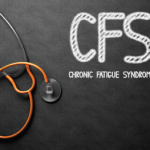CHICAGO—Joseph Breen, PhD, program officer at the National Institutes of Health in Bethesda, Md., opened the chronic fatigue syndrome (CFS) session at the Federation of Clinical Immunology Societies (FOCIS) 2017 meeting by asking presenters to describe the current state of the science to the key immunology stakeholders gathered in the room. The hope was that the presentations would stimulate new approaches to decipher the mechanistic and immunological underpinnings of myalgic encephalomyelitis (ME)/CFS, as well as open new avenues for clinical solutions.
Elizabeth Unger, MD, PhD, chief of the chronic viral diseases branch of the Centers for Disease Control and Prevention (CDC) in Atlanta agreed with this call to action, stating that, “It is very, very important that we have excellent scientists investigating this illness.”
What’s in a Name?
Researchers coined the name chronic fatigue syndrome in 1988 at the time of the first case definition, and the name has remained attached to the disease. Now, however, many patients and clinicians feel the name chronic fatigue syndrome trivializes the medical condition and they choose, instead, to use the name ME. CFS is also known as systemic exertion intolerance disease (SEID).
Public Health Problem
Dr. Unger described ME/CFS as a serious and long-term illness that affects many systems throughout the body. Patients who live with ME/CFS are unable to function in the same way they did before they became ill.
“One of the problems clinicians have is that the patients can look healthy when they walk into the office,” she explained, adding that, “It’s important they know this is a biological illness. This is not a mental illness.”
At least 1 million Americans have ME/CFS. This translates into a prevalence rate of 0.2%–0.7%. Unfortunately, only 20% of patients have been diagnosed. Patients, families and society bear the significant cost of the disease, which is estimated to be $9–14 billion annually in direct medical costs.
Although ME/CFS affects all populations, it is most prevalent in individuals aged 40–50 years. Infectious risk factors for ME/CFS are notable, but it is unclear if these infections are a cause or effect of ME/CFS. Non-infectious risk factors for ME/CFS include stress from physical trauma and adverse events. Some patients with ME/CFS have abnormal sleep patterns, but there are no consistent sleep abnormalities.
“The syndrome looks like a ‘sickness behavior’ triggered by cytokines after infection,” acknowledged Dr. Unger.
ME/CFS presents multiple challenges to the medical system. Firstly, it has no diagnostic test. Instead diagnosis relies on case definition, which is often inadequate to describe the disease. In 2015, the Institute of Medicine proposed a clinical case definition for ME/CFS. The new criteria include a substantial reduction or impairment in the ability to engage in pre-illness levels of occupational, educational, social or personal activities; post-exertional malaise; unrefreshing sleep; and at least one of the two symptoms: cognitive impairment or orthostatic intolerance.



